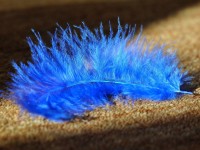You know how you try to change your sheets every single week? Well, you probably spend quite a lot of time not only sleeping on your bed, but also lounging on the couches. Moreover, unless you’re living alone, there’s not only you who uses them on the day to day basis. That’s why couch upholstery needs to be cleaned and freshened up every once in a while. And if you have small kids and/or pets, that ‘once in a while’ needs to happen quite often.
Due to sanitary purposes and the look of your couches and armchairs, you need to get them cleaned by professional upholstery cleaners with their supplies and equipment at least once, better twice a year. They’ll not only make your couches smell and look all fresh and clean, kill the bacteria in it, remove ugly stains and seating spots, but also prolong their life.
Besides, experienced cleaners do wonders when it comes to bringing those old, but dear to our hearts, grandma couches and chairs back to life and making them look like decent pieces of furniture.
Go to HireRush.com to post an upholstery cleaning request and hire local pros to make your couches nice and fresh.
However, you may totally take care of the couch in between those major cleanings and clean it once in two months on your own.
You just need to figure out a prompt, easy, yet really effective way of upholstery cleaning. That’s what I’m going to help you with.
How to clean couch upholstery
Upholstery cleaning necessities:
- Vacuum with an upholstery brush and narrow nozzle
- Upholstery cleaner (from the store or a homemade mix of mild laundry detergent/dish soap)
- Baby wipes
- Clean white cloths
- Bucket
- Microfiber cloth
- Brush and sponge (for microfiber couches)
- White vinegar
Couch upholstery cleaning step-by-step
- The first thing you need to do is to determine which cleaning products might be used on the type of fabric your couch’s upholstery is made of.
You may figure that out by reading the couch’s tags. - If you don’t have those, but know how the fabric is called, look it up online to learn which products to use.
Or, you may test the ones you already have on a hidden area of your couch. Generally, water, mild soap and vinegar won’t harm most upholstery fabrics. - A throughout vacuuming is the next (and quite important) step of our couch upholstery cleaning list. You need to vacuum your couch before washing or spot cleaning it.
Make sure to choose the right vacuum brush. The one with soft bristles or the special upholstery one will do the job.
Move your brush slowly to let the vacuum suck out all the dirt and dust from the couch.
Go through the gaps to remove food crumbs and dust balls (yep). - Inspect your couch for stains and spots. If there’re any, try to get rid of them with the help of white vinegar.
Just soak a corner of microfiber cloth in it and gently rub the stained area of upholstery. Don’t forget to wash this area with warm soapy water afterwards.
Use baby wipes to remove dirt spots and easier stains. - If you can’t get those stubborn stains off the upholstery, go on a quick run to the store and purchase a stain cleaner.
Or, visit Apartmenttherapy.com to learn the recipes of homemade stain removers that target certain kinds of stains. - Pour some warm water into a bucket and add a few drops of soap to it. Soak a white soft cloth in it, rinse the excess water and wash your couch with it.
Don’t just wipe, but wash, letting the water penetrate through the fabric a little bit to deal with the dust under the upholstery. - Don’t use too much water not to soak your couch. If the fabric is damp, but not saturated with water, it means that you’re doing just fine.
Use a brush and soapy water instead/before washing the upholstery with a cloth if you have a microfiber couch. - After that, you might want to go over the couch and wipe it with a damp non-soapy cloth/sponge.
- Let the upholstery dry and air out naturally. Provide proper ventilation for that matter.
Don’t let anyone (especially pets with dirty paws) use the couch until it’s completely dry. - As an alternative, you may use one of those dry upholstery solvents to dry clean your couches and chairs.
Just make sure to choose the one that doesn’t require any special equipment and follow the directions on the packaging to get it right.





